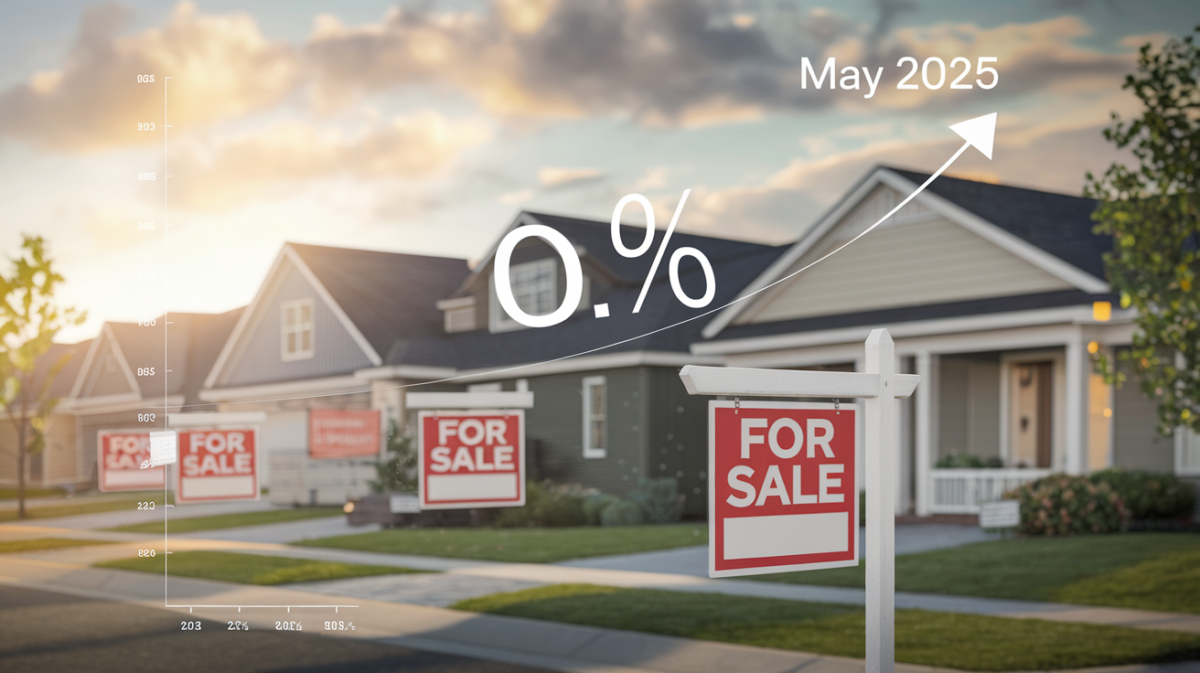The National Association of Realtors (NAR) reported a slight 0.8% increase in existing-home sales for May 2025, reaching a seasonally adjusted annual rate of 4.03 million units. While this uptick offers a glimmer of hope, it also marks the slowest May sales pace in 16 years, reflecting persistent challenges in the housing market.
Key Highlights from the May 2025 Report
The latest data reveals a mixed bag of trends, with some positive indicators overshadowed by ongoing affordability concerns. Here are the critical takeaways:
- Sales Performance: Existing-home sales rose by 0.8% from April to May but declined by 0.7% compared to May 2024.
- Median Home Prices: The national median existing-home price hit a record $422,800, up 1.3% year-over-year.
- Inventory Levels: Unsold inventory grew to 1.54 million units, a 20.3% increase from last year, equating to a 4.6-month supply.
- Mortgage Rates: The average 30-year fixed mortgage rate hovered between 6.62% and 6.89%, continuing to strain affordability.
Market Dynamics: High Rates and Affordability Woes
The housing market remains under pressure as high mortgage rates and elevated home prices deter potential buyers. First-time buyers, who typically drive a significant portion of sales, accounted for just 30% of transactions in May—well below the historical average of 40%.
“The combination of high rates and record prices is squeezing many buyers out of the market,” said Lawrence Yun, NAR’s Chief Economist. “Until we see meaningful improvements in affordability, the recovery will remain sluggish.”
Regional Insights: Inventory Growth Varies
Inventory levels improved across all regions, but the gains were uneven:
| Region | Inventory Growth (Year-over-Year) |
|---|---|
| West | 40.7% |
| South | 32.9% |
| Midwest | 22.9% |
| Northeast | 19.0% |
Despite these increases, many areas still face shortages compared to pre-pandemic levels, particularly in high-demand urban centers.
Industry Outlook: Stability on the Horizon?
Economists predict that mortgage rates will stabilize between 6% and 7% for the remainder of 2025, which could bring some relief to buyers. However, affordability remains a significant hurdle. The typical buyer now needs an annual income of nearly $92,000 to afford a median-priced home—a barrier that excludes many households.
Investor Perspective: Cautious Optimism
For real estate investors, the current market presents both challenges and opportunities. Key investment vehicles like the SPDR Homebuilders ETF (XHB) and the Vanguard Real Estate Index Fund ETF (VNQ) have shown modest gains, reflecting cautious optimism:
- XHB: Trading at $97.40, up 2.6% from the previous close.
- VNQ: Trading at $91.18, up 1.32%.
These trends suggest that while the market faces headwinds, investors remain hopeful about long-term growth.
Conclusion: A Slow Path to Recovery
The May 2025 NAR report underscores a housing market in transition. While rising inventory and stabilizing mortgage rates offer some hope, affordability challenges and sluggish sales indicate that a full recovery may still be months—or even years—away. For now, buyers, sellers, and investors alike must navigate a landscape marked by uncertainty and opportunity in equal measure.







